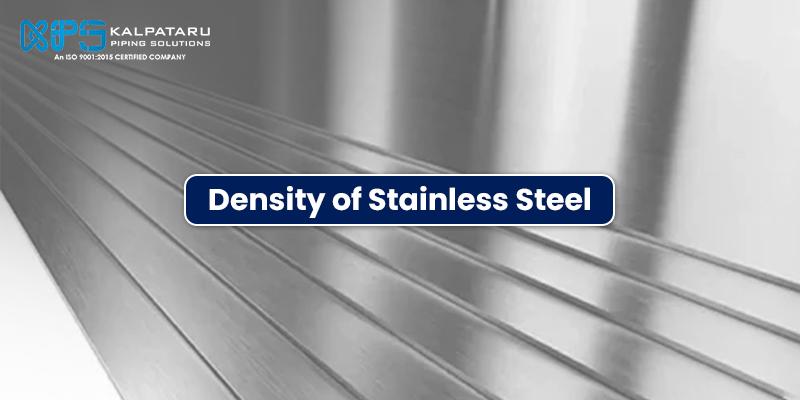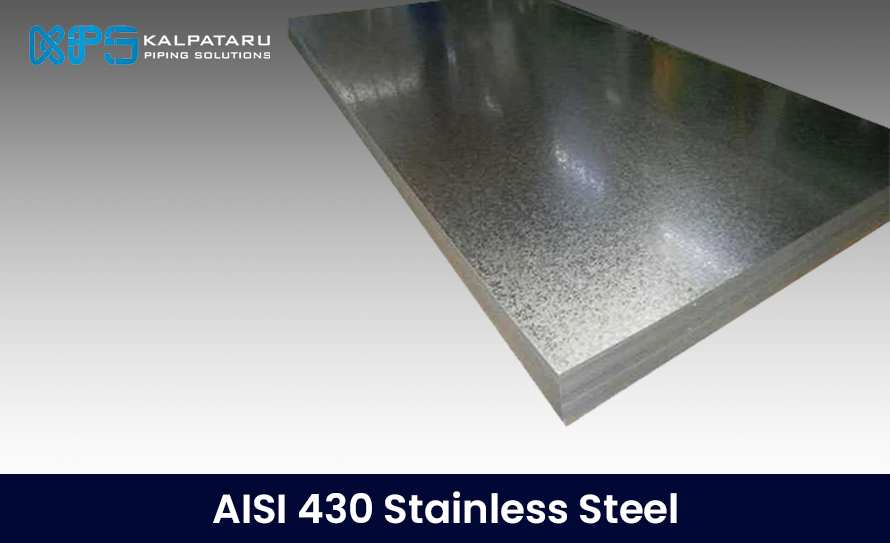The density of stainless steel typically ranges from approximately 7,500 kg/m³ to 8,000 kg/m³, depending on the alloy. Being a metal alloy, its density can be influenced by the volume of other elements present in the material. If you know the components in the metal, it’s possible to calculate the proportion and, ultimately, the density of the metal.
However, most stainless steel alloys fall within the range of 7,500 kg/m³ to 8,000 kg/m³, depending on the grade.
Stainless Steel Density
The unique density of stainless steel makes it a preferred option for various applications. Here are some benefits of using stainless steel:
Rust Resistance
A key feature of stainless steel is its exceptional rust resistance. It also resists various types of corrosion depending on the grade and application. The complex coating on stainless steel that gives it rust-resistant properties varies with the grade.
Super Strength
Stainless steel maintains the renowned strength characteristics of steel. Additionally, it can be produced with varying hardness and strength for different applications. Because of its strength and corrosion resistance, stainless steel is often preferred in the construction industry.
Aesthetic Appeal
Besides its strength and corrosion resistance, stainless steel is known for its aesthetic finish. It can be produced with a mirror finish, as well as other finishes like brushed and dull polished. Its unique look makes it a popular choice for manufacturing sinks and electronics such as stoves and refrigerators.
What is Density?
In general terms, density refers to the amount of something within a defined space. For instance, when we say Manhattan is densely populated, we mean that a lot of people live within the borough’s limits.
More scientifically, density is defined as mass per unit /volume. The formula for density is:
p=Vm
where p represents density, m stands for mass, and V denotes volume.
Density is also an intensive property, which means the density of an object remains constant regardless of the quantity present.
Consider the classic question: Which weighs more, a ton of bricks or a ton of feathers? The answer is that both weigh the same – one ton. The concept of density, not weight, underlies this question. A brick’s density is roughly 1.992 grams per cubic centimeter, while a feather’s density is around 0.0025 grams per cubic centimeter.Therefore, one square inch of brick weighs significantly more than one square inch of feathers, about 800 times more.
Density can be measured in various units, including kilograms per cubic meter (kg/m³), grams per cubic centimeter (g/cm³), grams per cubic meter (g/m³), or pounds per cubic inch (lb/in³). To calculate the density of a stainless steel object or convert density from one unit to another, you can use a metal calculator to determine the weight and density of stainless steel.
By understanding density, you gain insights into the physical properties of materials, which can be critical in various fields such as engineering, construction, and materials science.
Why Does Density Matter?
Density is a crucial factor for industrial designers when developing concepts for various applications. Different metals have varying densities, which can significantly impact the design and functionality of a product. For instance, in designing a lamp that sits on a table, the density of the material might not be very critical. However, in designing an airplane, where weight and balance are essential for flight, density becomes extremely important.
Density also plays a vital role in metallurgy when blending metals to create alloys. Steel, an alloy of iron, carbon, and other elements, varies in density based on its composition. For example, stainless steel contains at least 10.5% chromium, making its density different from that of carbon steel, which has a lower chromium content.
Understanding the density of different types of steel is important when creating new grades or welding different kinds of steel together. Density affects the strength, hardness, and malleability of the final material, influencing its suitability for various applications.
How to Use Your Knowledge of Density While Selecting Materials
When selecting materials for fabrication or construction, understanding density is essential. Here are key factors to consider:
- Physical Properties: Evaluate the melting point, conductivity, and density of the material. These properties determine how the material will behave under different conditions.
- Mechanical Properties: Assess the strength, ductility, and resistance of the material. These properties impact the material’s performance and durability.
- Weight Considerations: In projects where weight is critical, density plays a significant role. Engineers aim to use low-density materials to control the overall weight of the object. However, it’s also important to consider the strength-to-weight ratio to ensure the material is strong enough for the application.
- Strength and Durability: High-density materials like steel offer exceptional strength compared to other metals. Stainless steel, for example, is not only strong but also corrosion-resistant and visually appealing, making it a popular choice for various applications, from kitchenware to surgical instruments.
- Application-Specific Needs: For applications requiring a strong yet lightweight material, engineers might use thinner versions of a high-density material. Stainless steel’s high relative strength allows for micro-thin surgical blades that are still very strong.
By balancing these factors, you can select the right material that meets the specific needs of your project while leveraging the benefits of its density and other properties.
FAQs
What is the density of 304 stainless steel?
The density of stainless steel 304 is 7,930 kg/m³ (7.93 g/cm³ or 0.286 lb/in³). One cubic meter of 304 stainless steel weighs 7,930 kg. Density (ρ) is calculated by dividing the mass (m) by its volume (V), ρ = m/V.
What is the true density of stainless steel?
The density of stainless steel ranges from 7.5 to 8.0 g/cm³ (0.27 to 0.29 lb/in³), depending on the specific alloy.
What is the mass density of stainless steel kg m3?
The mass density of stainless steel ranges from 7,500 kg/m³ to 8,000 kg/m³, depending on the specific alloy and its composition.




